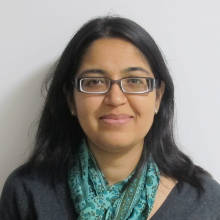[Photograph by Angelo Giordano under Creative Commons]
I don’t think much when I buy eggs. I just pick up whatever looks like a decent tray of eggs off the supermarket shelf. Since this is China and not everything is labelled in English, I would also only buy an egg tray with the picture of a hen on it and/or something that looks like it came out of a hen—there’s a dizzying array of eggs here in different colours and sizes so one can never be sure.
Imagine my surprise when someone talked of Egg 4.0. I had never given any thought to Egg 1.0 or 2.0, and I didn’t know of the existence of an Egg 3.0 and here they were talking of an Egg 4.0.
A bit of context. White goods giant Haier organizes something called the Haier Global Forum on Business Model Innovation. Leading global thought leaders (this year it was Jeremy Rifkin, author of The Third Industrial Revolution) deliver lectures at the forum and there is much deliberation and discussion on Haier’s own out-of-the-box ideas on management, now the subject of business school case studies and books, and finally there is a customary keynote address by Zhang Ruimin, chairman and chief executive of Haier.
At this year’s forum, I was expecting to hear about washing machines, refrigerators, high-tech manufacturing, connected factories, Internet Plus, etc., when suddenly someone on the stage started talking of eggs.
“We need to build an Egg 4.0 era,” he declared in Chinese, and the interpreter’s raspy voice immediately crackled those magic words into my earpiece.
Long story short, Haier, essentially a white goods manufacturer, has embarked on a revolutionary journey to spur innovation across the organization. It involves, among other things, breaking down hierarchies and creating an atmosphere where self-organizing teams will come together on new product ideas, and much like start-ups, be responsible for generating funding, assembling the team, and then the creation, execution and delivery of innovative new products that would otherwise not grow out of a large hierarchy-driven company. (More on Haier’s daring reinvention in a future piece.)
During this experiment, Haier’s financial services division made a 180 degree turn away from white goods and got into the unlikely area of agricultural finance, and hence eggs.
Why? There are a couple of reasons. One, the Chinese love eggs in whatever form they may be in—tea eggs, hundred-year eggs or the regular boiled, fried or scrambled eggs that you and I are more familiar with. Apparently the per capita consumption of eggs in China is one egg a day. But then the business of producing eggs and getting them to the plates of the final consumer is not efficient. Since this industry is dominated by an overwhelming majority of small players, no one company has a market share of over 0.3%. Prices fluctuate wildly so profitability is low. Plus there are challenges with regard to heavy investment in assets, long investment cycles, logistics and, of course, food safety and poor knowledge of modern breeding technologies.
So this is where Haier steps in, and apart from financing, it sets up a platform for producers that helps them with things like modern (and clean) technologies, site selection, connecting with equipment providers from across the globe, etc. In the process, it brings in newfangled concepts like ‘OEM breeding’ and ‘Cloud breeding’, essentially bringing in ideas from manufacturing and internet technologies into egg production.
The experiment is very new: it began only in 2013. According to the company, with the implementation of new technologies thanks to Haier’s intervention, efficiency at the egg farms has improved tremendously. Earlier it took three years for “traditional breeding”: from site selection to assembling the facilities and getting things working. Now it takes 270 days. The investment in fixed assets is down to 10%.
The improvement in productivity and quality has apparently led to a drop in the “production cost” of a single egg from Renminbi (RMB) 0.61 to RMB 0.52 (I wonder though: what about the hard work put in by the hens?), the logistics cost has gone down and profits have risen. A single egg now sells at an average price of RMB 0.83. Apparently the special eggs used in egg facial masks, because of the higher quality, now enjoy higher margins: 500% as opposed to 200% earlier.
I am no expert on the egg production industry, but the experiment struck a chord.
At one level, the experiment shows what can be achieved if we blur the boundaries between two industries ever so slightly, so that best practices from one industry can cross over into the other. So Haier is able to translate ideas it has mastered in manufacturing for agriculture. Think of what Devi Shetty of Narayana Health (earlier called Narayana Hrudayalaya Hospital) is able to achieve in cardiac care (success rate of 95%, low error rates, low costs and huge scale) by incorporating simple concepts from the world of business. As the late CK Prahalad said, “Think about applying TQM (total quality management) principles to surgery.”
A simple initiative by a large enterprise can help small producers raise the levels of overall efficiency in the market and make more money while raising the quality of the produce and making customers happy. For Haier, I am sure it didn’t cost much. But in the end, everyone wins. Hopefully, the hen too.


